Subjects and Style
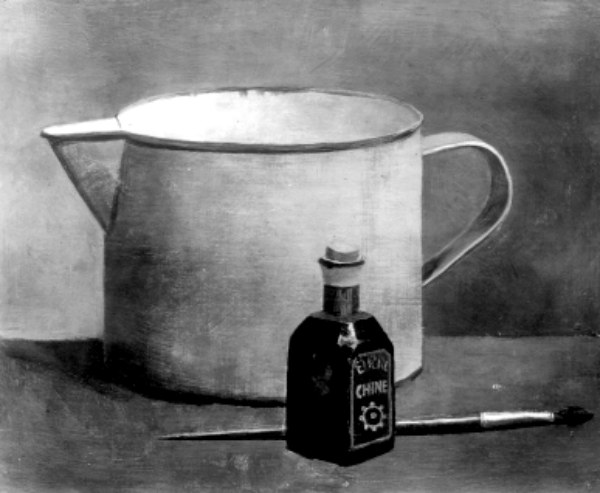
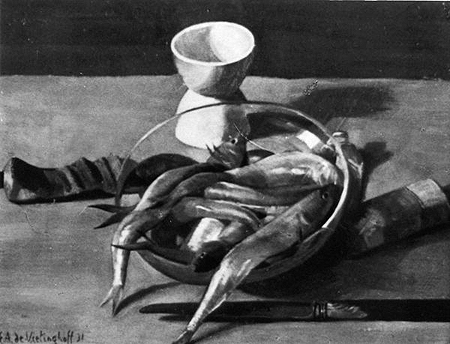 During the very first years of his painting career, Vietinghoff seeks experiences with Cubism but quickly stops, feeling Cubism was only as a temporal phase. Among others, the painters Piet Mondrian, Robert Delaunay, Maurice Vlaminck and Massimo Campigli stopped their Cubist phase as well. The last pictures with Cubistic influence from 1923/24 have not survived. Some of his first pictures, only preserved as black white photos, show rather amateurish exercises using random objects (Milk pot and ink bottle) or somewhat awkward representations of "unordered" items from his bachelor life (Little fishes, eggcup and color tubes).
During the very first years of his painting career, Vietinghoff seeks experiences with Cubism but quickly stops, feeling Cubism was only as a temporal phase. Among others, the painters Piet Mondrian, Robert Delaunay, Maurice Vlaminck and Massimo Campigli stopped their Cubist phase as well. The last pictures with Cubistic influence from 1923/24 have not survived. Some of his first pictures, only preserved as black white photos, show rather amateurish exercises using random objects (Milk pot and ink bottle) or somewhat awkward representations of "unordered" items from his bachelor life (Little fishes, eggcup and color tubes). 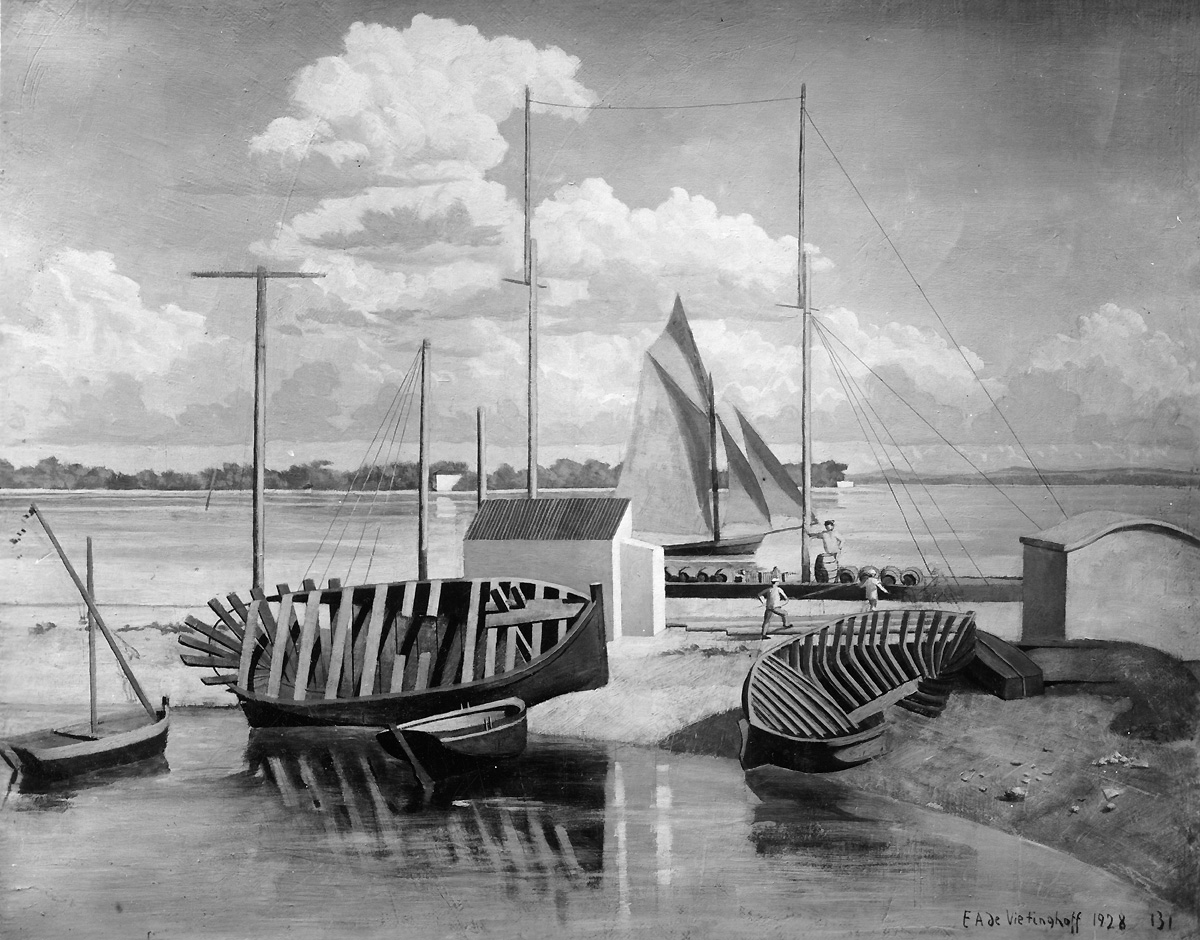
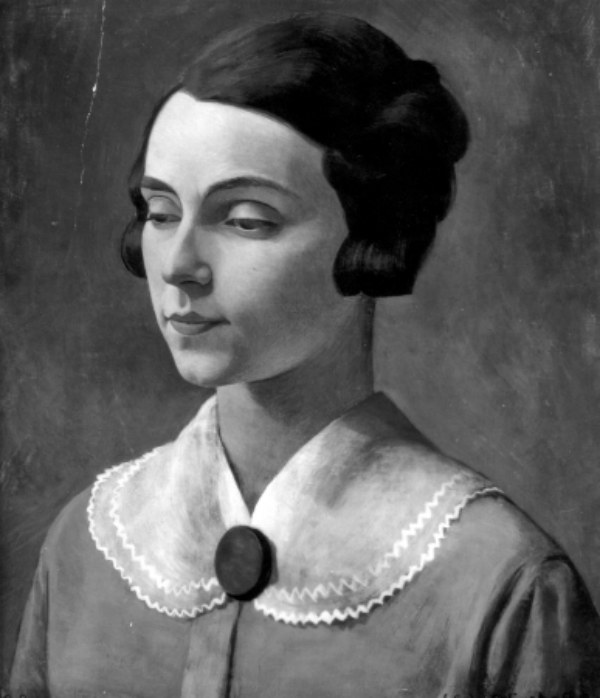 Soon afterwards, we see the progressive application of his rediscovered techniques although still with the recognizable elements of the periods of contemporary style such as portraits and female nudes with broad eyelids and the flair of the Parisian scene and fashion. Other common topics of the first two decades of the century included the guitar and boats on the shore. Works from that time which survived his own judgment and therefore he did not delete were sold occasionally or destroyed by consequences of World War II or simply lost.
Soon afterwards, we see the progressive application of his rediscovered techniques although still with the recognizable elements of the periods of contemporary style such as portraits and female nudes with broad eyelids and the flair of the Parisian scene and fashion. Other common topics of the first two decades of the century included the guitar and boats on the shore. Works from that time which survived his own judgment and therefore he did not delete were sold occasionally or destroyed by consequences of World War II or simply lost. 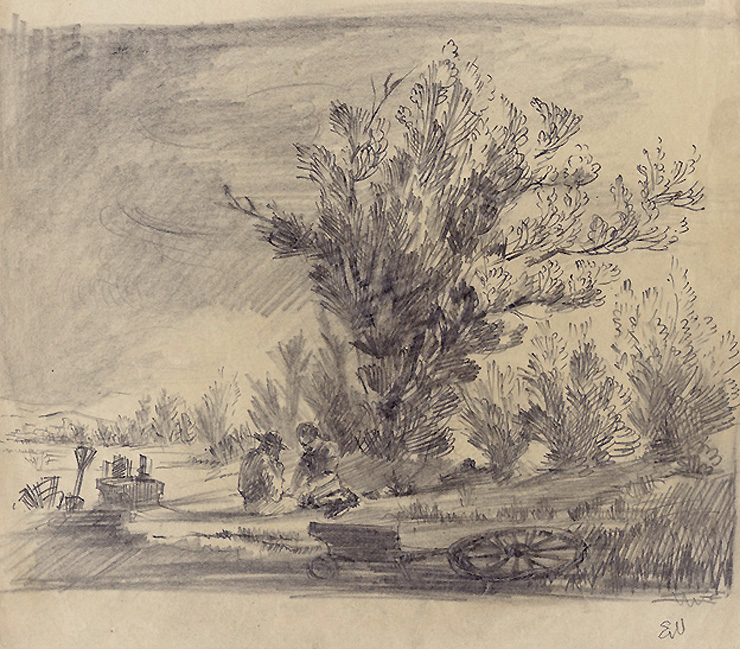
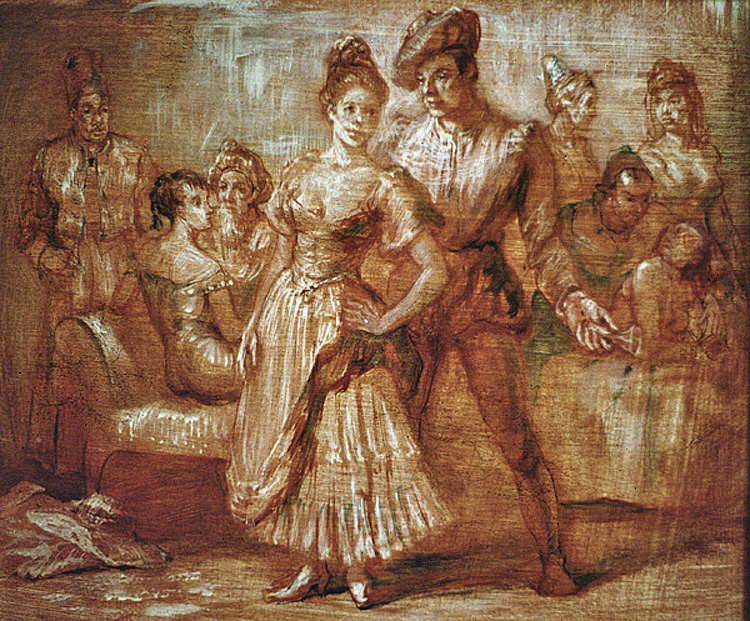 Egon von Vietinghoff uses the known painting media: he works with tempera colors and at first in gouache as well as with pencil, charcoal, ink, and etching needle. Later on he uses tempera only to provide the sketch over the prime coat as a preliminary stage before adding colors. Some exceptions show monochrome works in the manner of Camaieu or Grisaille paintings but only for imagined figural works. When doing so, he partly highlighted the brownish reddish tempera with a little white oil-based paint and emphasized the shadows by a few black strokes. Early on, he concentrated almost exclusively on the multilayer oil resin painting technique. In his portraits however, he often uses red chalk.
Egon von Vietinghoff uses the known painting media: he works with tempera colors and at first in gouache as well as with pencil, charcoal, ink, and etching needle. Later on he uses tempera only to provide the sketch over the prime coat as a preliminary stage before adding colors. Some exceptions show monochrome works in the manner of Camaieu or Grisaille paintings but only for imagined figural works. When doing so, he partly highlighted the brownish reddish tempera with a little white oil-based paint and emphasized the shadows by a few black strokes. Early on, he concentrated almost exclusively on the multilayer oil resin painting technique. In his portraits however, he often uses red chalk. 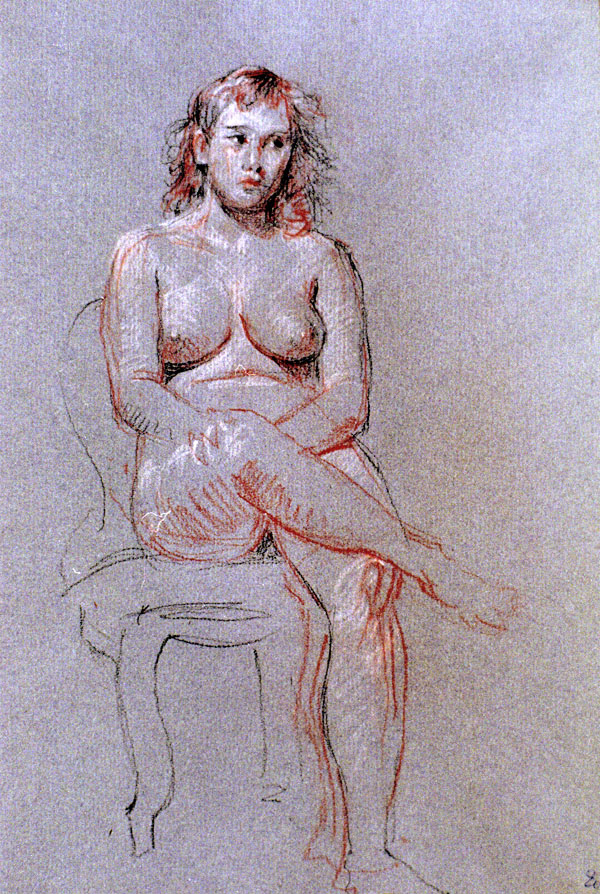
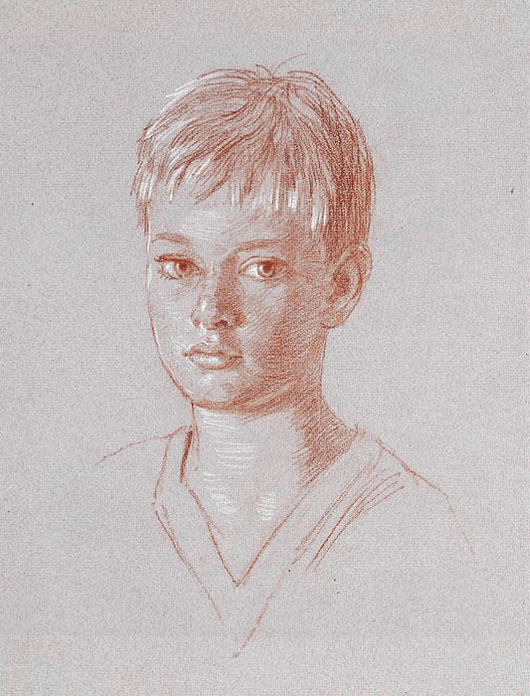 From the 1940s to the 1970s he drew some dozens of red chalk portraits, among them many of children. When he did not portray his wives or his son in those drawings it is because they were often commissions.
From the 1940s to the 1970s he drew some dozens of red chalk portraits, among them many of children. When he did not portray his wives or his son in those drawings it is because they were often commissions.We have preserved many drawings with nude models, presumably from the years approx. 1940 to approx. 1952, some of them are complete while others are just tenderly sketched.
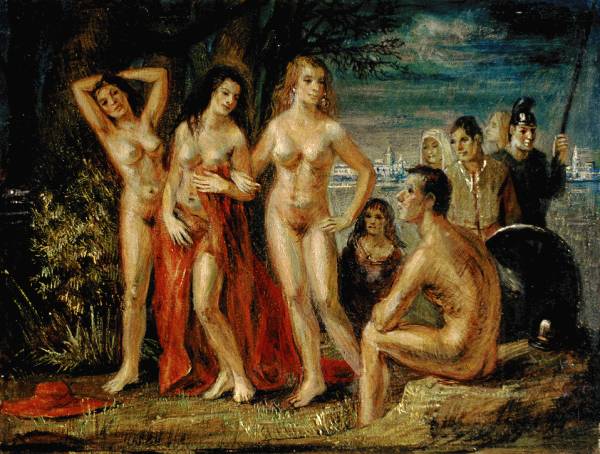
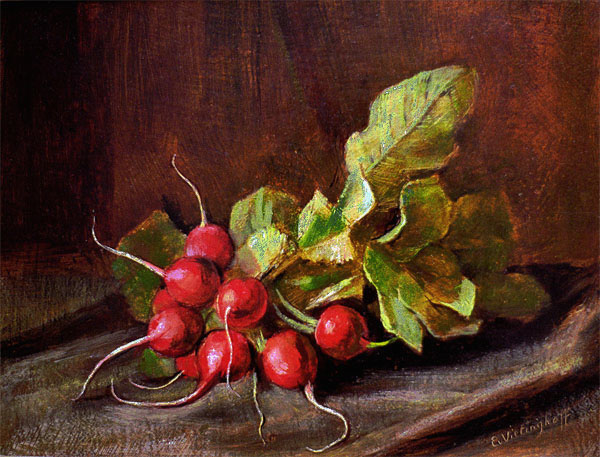 His subjects contain all classic categories: flowers, still lifes, landscapes, nudes, and portraits. He also included figural scenes from the Bible or mythology and the impressions from his youthful walks through Spain and Morocco. In his earlier years he seeks landscape motifs from his surrounding region and from his journeys. Regularly he visited the fruit and vegetable market or asked his wife Liane for meadow flowers or wild fruits because he needed a real model for every picture. The exceptions were for scenes with many human figures or with single women who originated from his imagination.
His subjects contain all classic categories: flowers, still lifes, landscapes, nudes, and portraits. He also included figural scenes from the Bible or mythology and the impressions from his youthful walks through Spain and Morocco. In his earlier years he seeks landscape motifs from his surrounding region and from his journeys. Regularly he visited the fruit and vegetable market or asked his wife Liane for meadow flowers or wild fruits because he needed a real model for every picture. The exceptions were for scenes with many human figures or with single women who originated from his imagination. 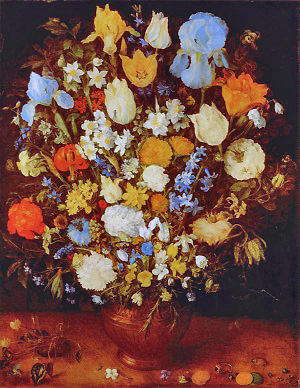
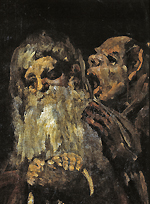 Vietinghoff examined the old masters both technically and intellectually, and learned from them. Nevertheless, he did not imitate nor quote them but found his own style.
Vietinghoff examined the old masters both technically and intellectually, and learned from them. Nevertheless, he did not imitate nor quote them but found his own style.There is only a handful of pictures which directly show or we can deduce the connection to certain famous paintings. He technically compared these works.
Through his intensive studies of favored painters, he had internalized certain composition sets and elements of motifs to such a degree that they also appear in his picture world too.
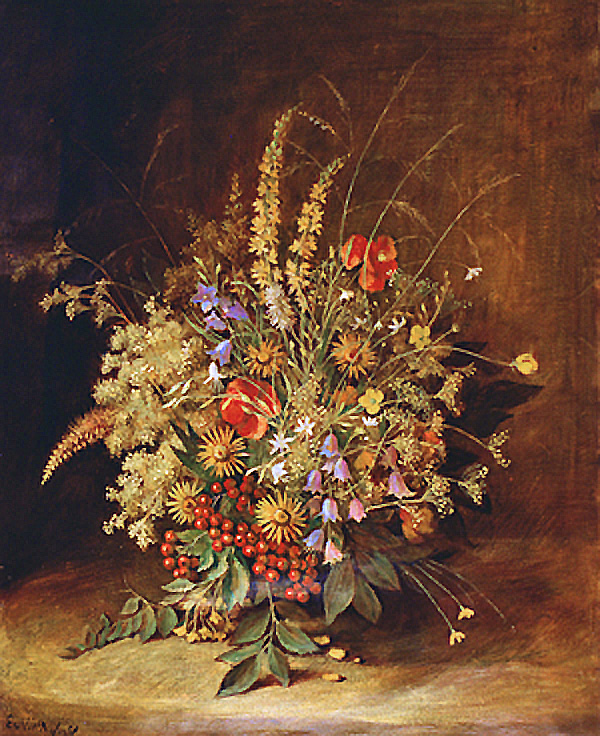
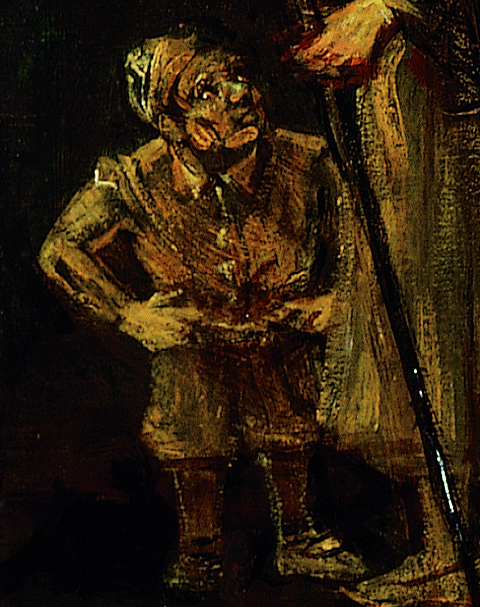 For instance, the powerful density in some flower bouquets could vaguely be associated with Jan Bruegel the Elder and his contemporaries. The dwarf on the left margin of Vietinghoffs Witches' Sabbath is related in form and color to some grotesque figures in Goya’s works. A knife with yellowish handle occasionally appears in his still lifes. This, a white wine glass and pewter plates are all props in the iconography of the Old Masters.
For instance, the powerful density in some flower bouquets could vaguely be associated with Jan Bruegel the Elder and his contemporaries. The dwarf on the left margin of Vietinghoffs Witches' Sabbath is related in form and color to some grotesque figures in Goya’s works. A knife with yellowish handle occasionally appears in his still lifes. This, a white wine glass and pewter plates are all props in the iconography of the Old Masters.Although he feels appreciated of qualities in a hanging duck of Sustermans, the partridges and rabbits of Chardin, the Golden rain of Danae of Titian and the Battle of the Amazons of Rubens, he dedicated none of his more than 2700 pictures to any of these topics. He did not left any painting with real town views, pictures with ships or a train, even though he was an admirer of van Goyen, Turner and Guardi. The only exception, the small veduta Boats in the Bay of Naples is the earliest known painting. It was probably created when Vietinghoff spent a couple of months on Capri at the age of 19/20. It is evidence of both his artistic sensibility and his early self-taught skills. Echoes of Italian vedutas are undeniable.
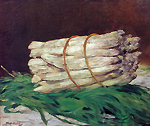
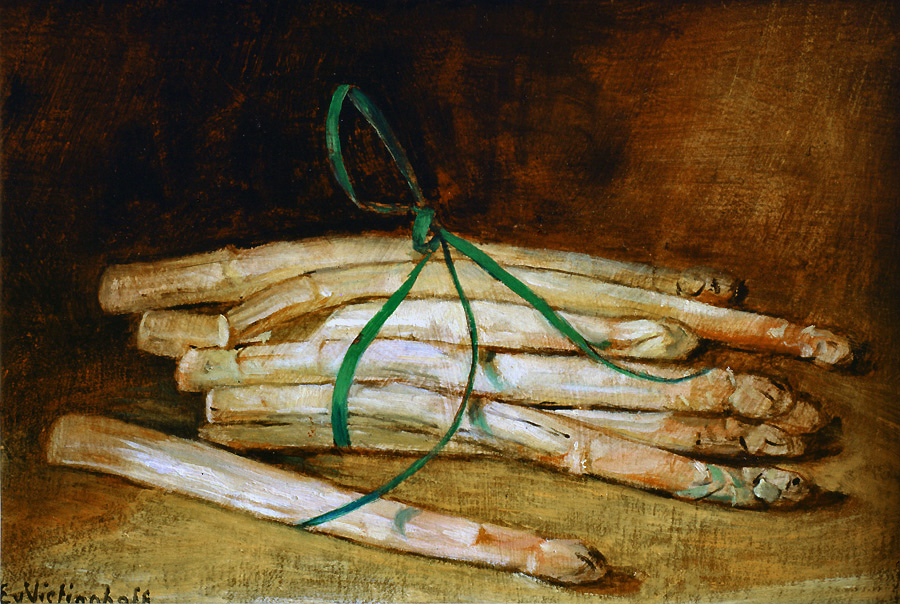 Future historical art analyses may lead to more scientific conclusions; however, it is definite from past conversations with the artist lasting decades and from the knowledge of his personality that he certainly never intended to paint in the style of one of his studied masters. Even though iconographic associations to these masters may be noticed, they should be more unconsciously driven rather than as imitations or quotations.
Future historical art analyses may lead to more scientific conclusions; however, it is definite from past conversations with the artist lasting decades and from the knowledge of his personality that he certainly never intended to paint in the style of one of his studied masters. Even though iconographic associations to these masters may be noticed, they should be more unconsciously driven rather than as imitations or quotations. 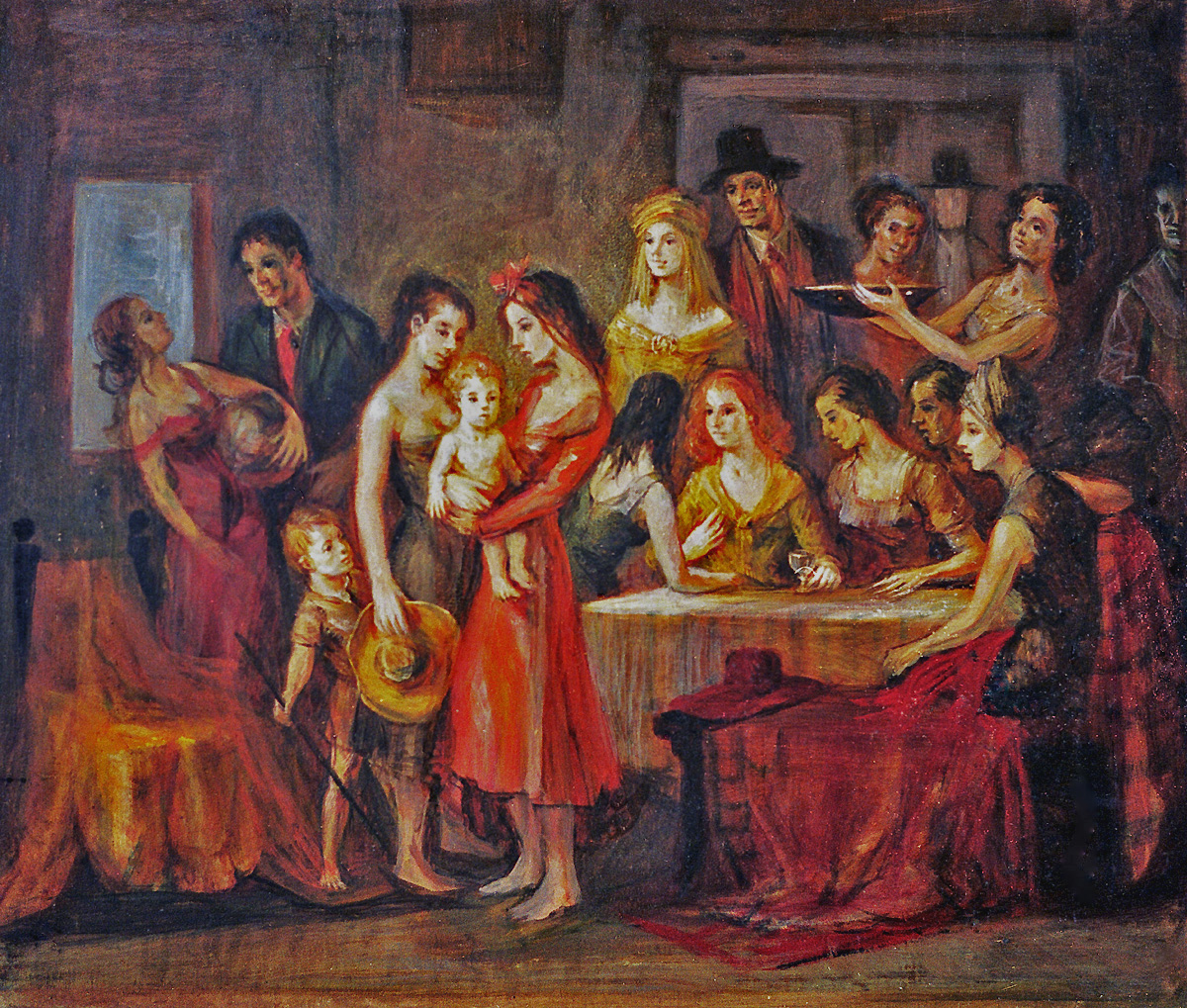
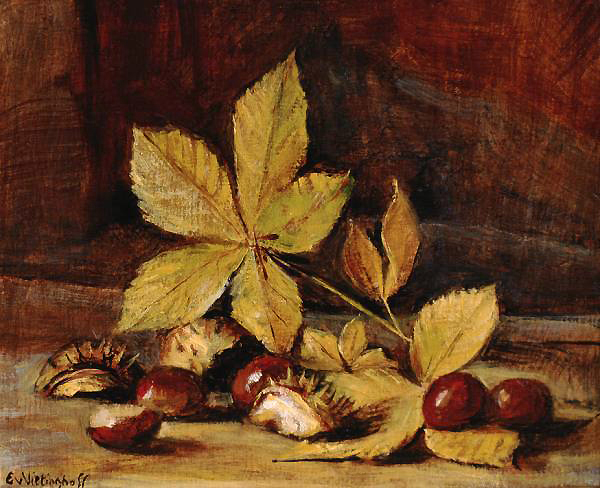 He was indifferent to the choice of the subject because he valued art works exclusively according to the existence of a spiritual vision and the painter’s skills to render it on the canvas.
He was indifferent to the choice of the subject because he valued art works exclusively according to the existence of a spiritual vision and the painter’s skills to render it on the canvas. He was interested neither in the real object nor in the narrative content of a scene but solely in the successful transformation of an artistic imagination. He neither judged the level of the art according to historical, biographical, anecdotic, and allegorical content or even the psychological motivations of the artist.
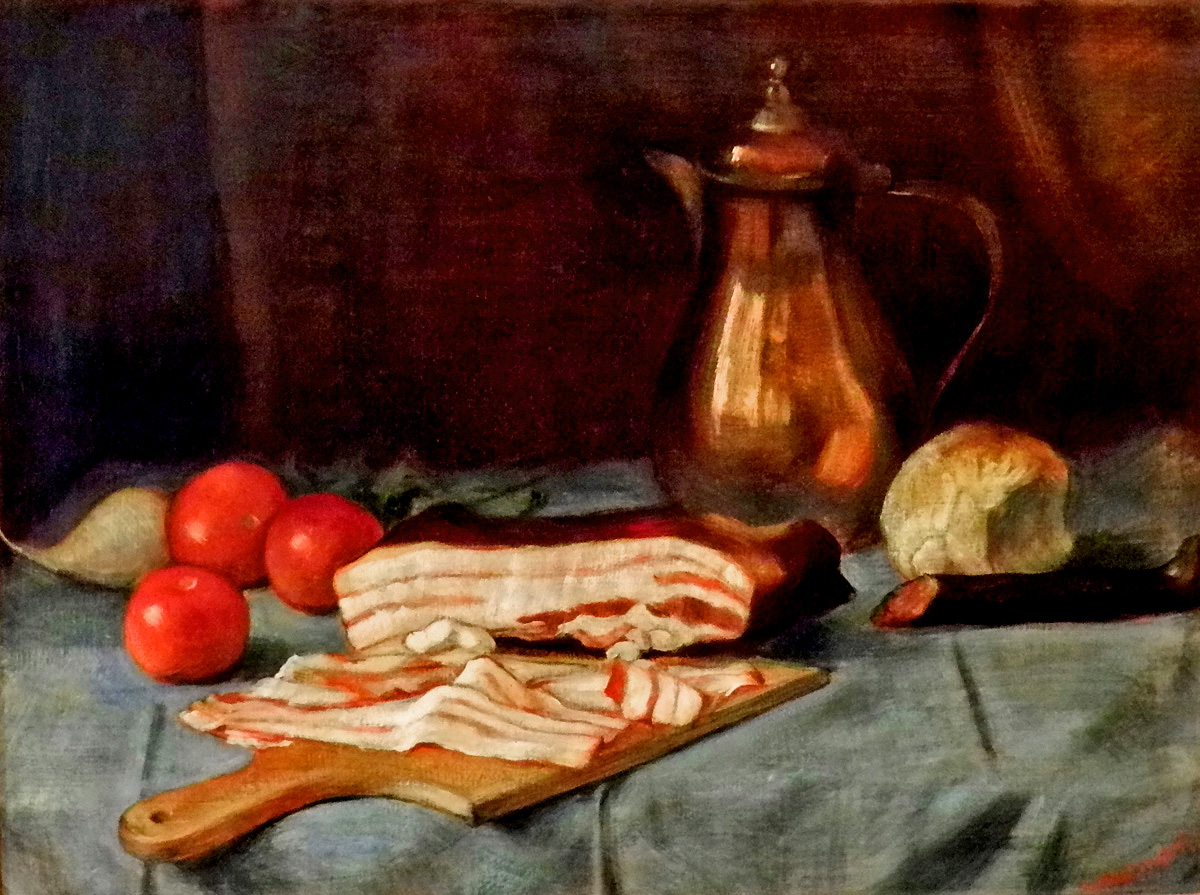
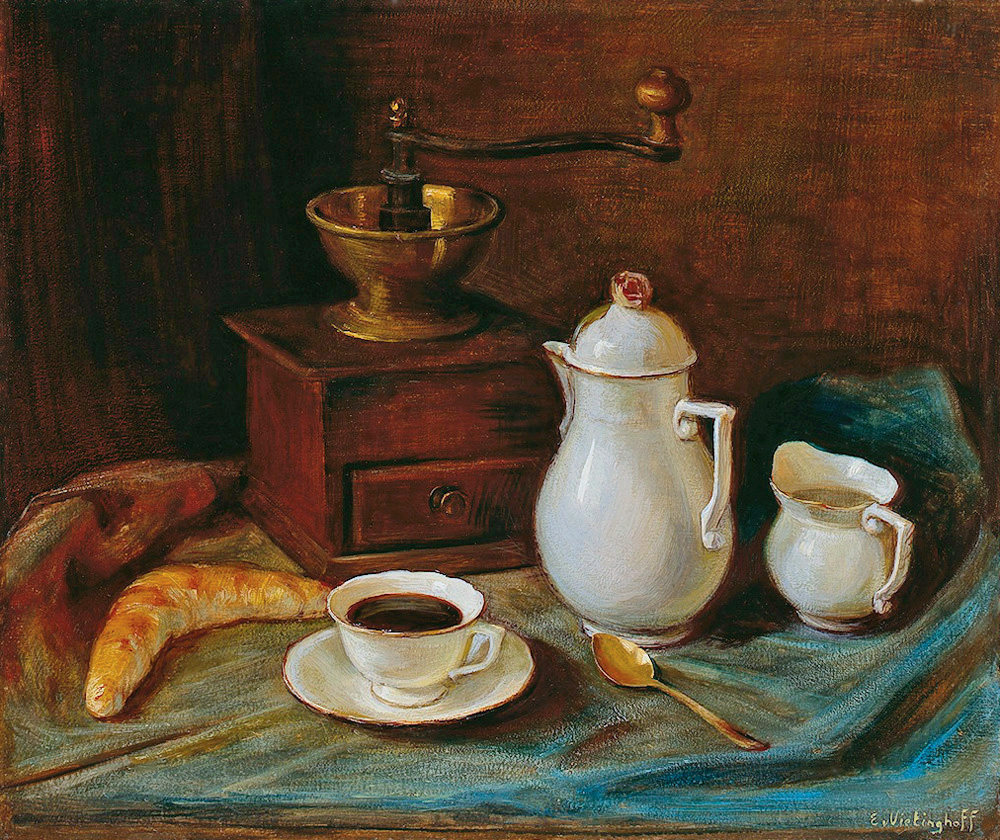 He only seldom and reluctantly complied with more concrete customer's request, e.g. with subjects like ham, bacon, trout, or a certain red wine bottle, which mainly were sold to restaurants by a broker.
He only seldom and reluctantly complied with more concrete customer's request, e.g. with subjects like ham, bacon, trout, or a certain red wine bottle, which mainly were sold to restaurants by a broker. Apart from occasional still lifes with fishes, crawfish or prawns, he did not like dead animals such as rabbits or pheasants in front of his easel while painting. Among the commission works, there is a unique subject to be mentioned: Coffee grinder with coffee set and Gipfeli. This picture is in the possession of the Johann Jacobs Museum ("coffee museum") in Zurich.
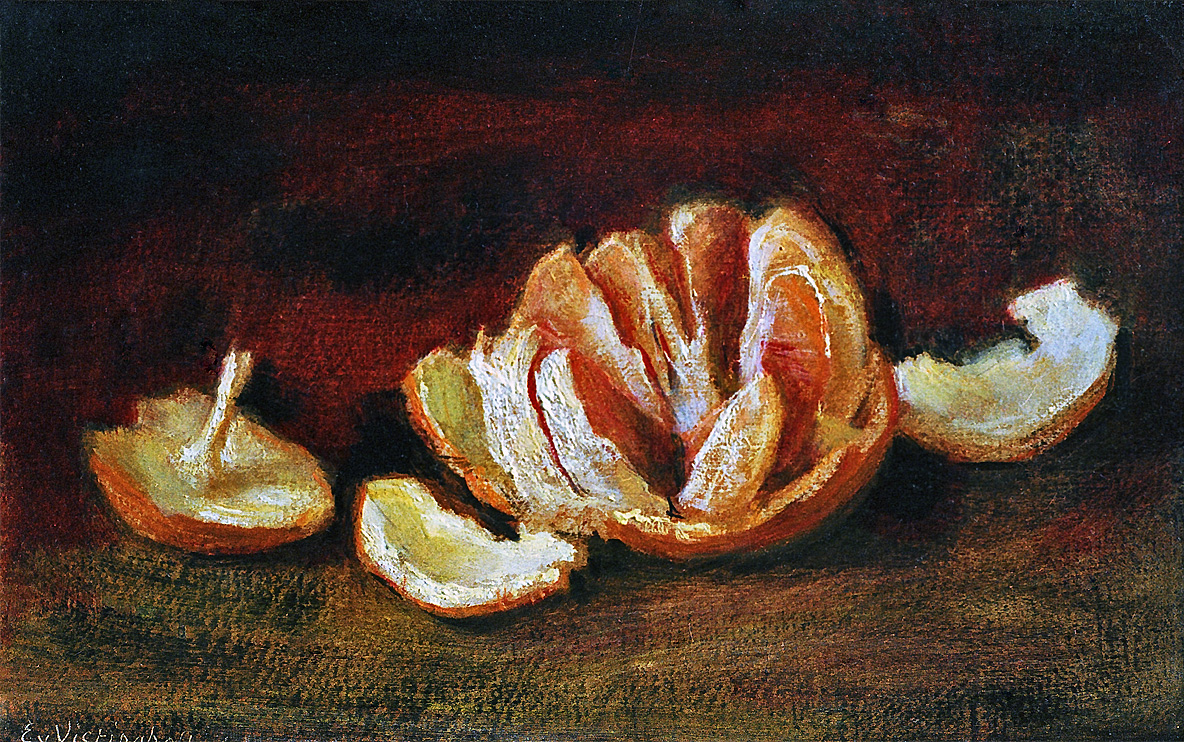
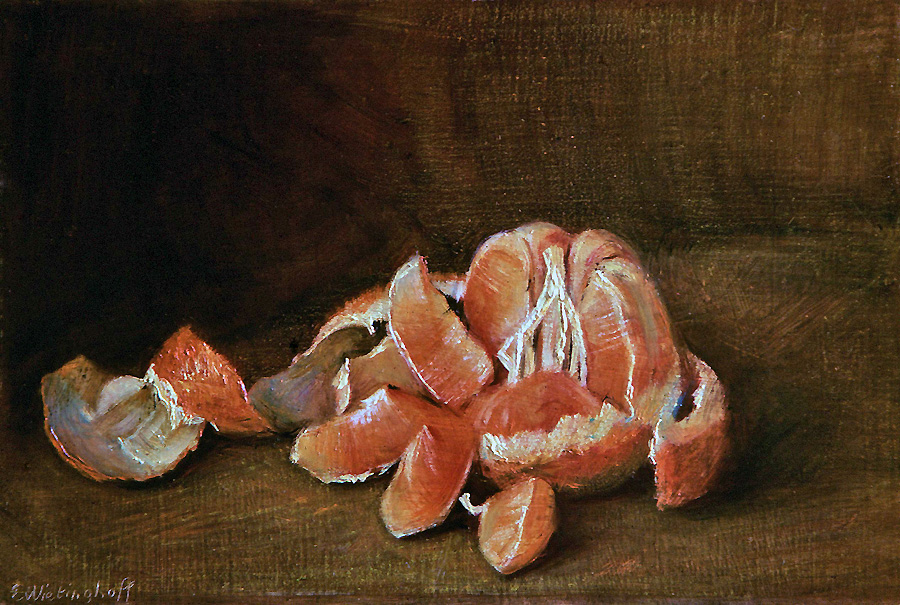 He often replaced a purchased picture by a new one with the same subject – after all, he needed to feed his family.
He often replaced a purchased picture by a new one with the same subject – after all, he needed to feed his family. Therefore, sales steer the frequency of some subjects. Pictures with flowers and fruits make up the greatest part to the entire work.
In particular, the repeatedly replaced fruit still lifes created a rich variation during their 70 years of being painted. In the frequent challenge of creating the visual characteristics for each fruit, he enhances his ability to give grandeur to simplicity and to render details faithfully to the canvas.
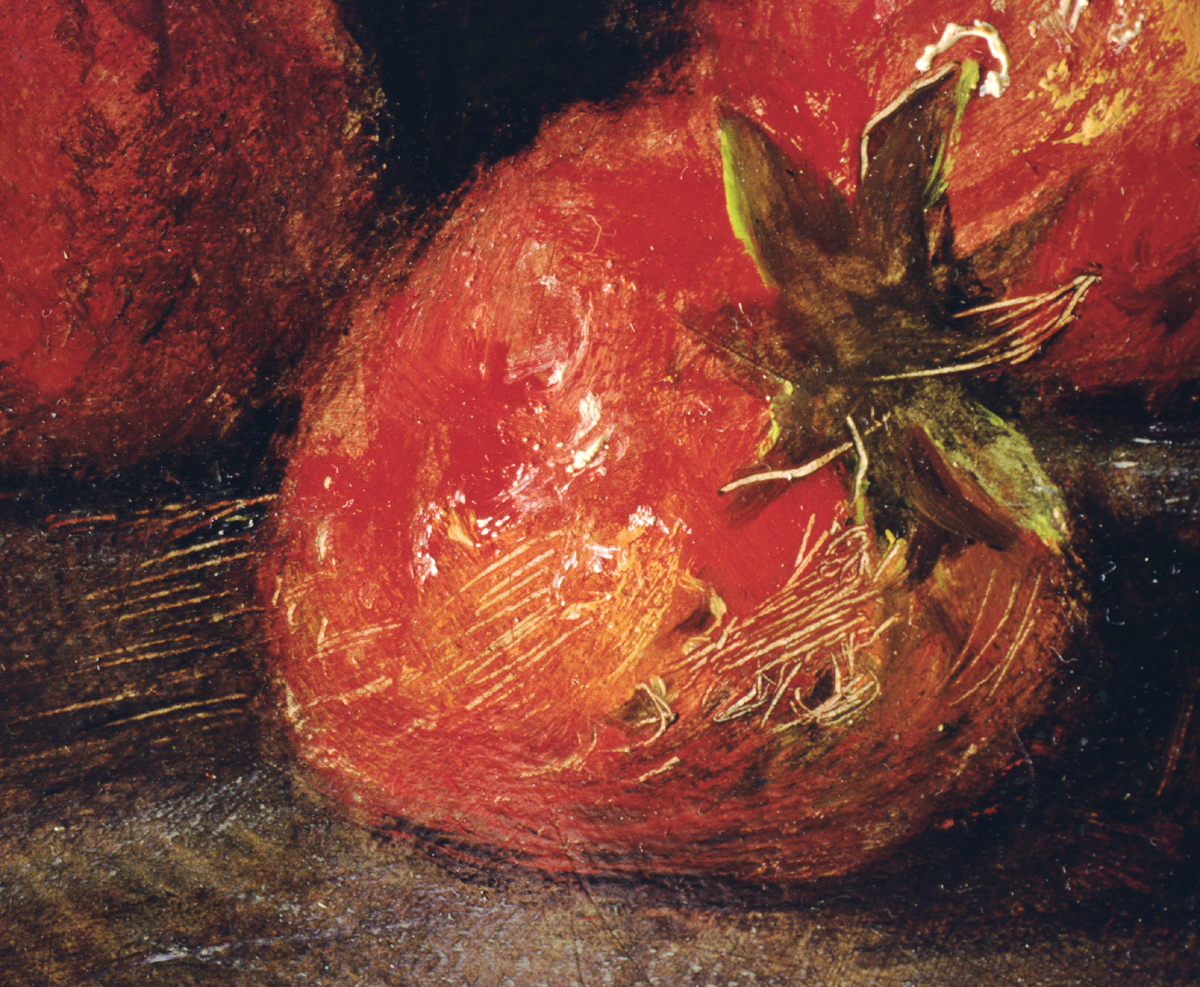
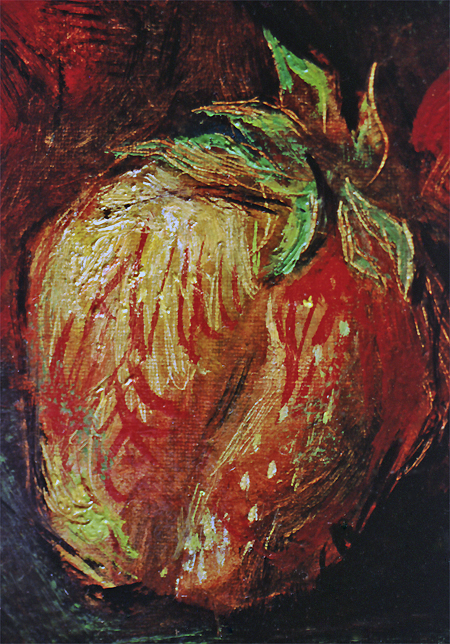 We specially observe a high degree of variety in the presentations of the velvet peach skin, the highlights on cherries, the color play of opened oranges, the irregularity in walnut shells, the specific strawberry pores, and in the translucency of white grapes as well as in the dull surface of blue grapes.
We specially observe a high degree of variety in the presentations of the velvet peach skin, the highlights on cherries, the color play of opened oranges, the irregularity in walnut shells, the specific strawberry pores, and in the translucency of white grapes as well as in the dull surface of blue grapes.Over the years, he became swifter in artistically grasping the nature of the phenomena. His executions became more expert while also appearing in new variations.
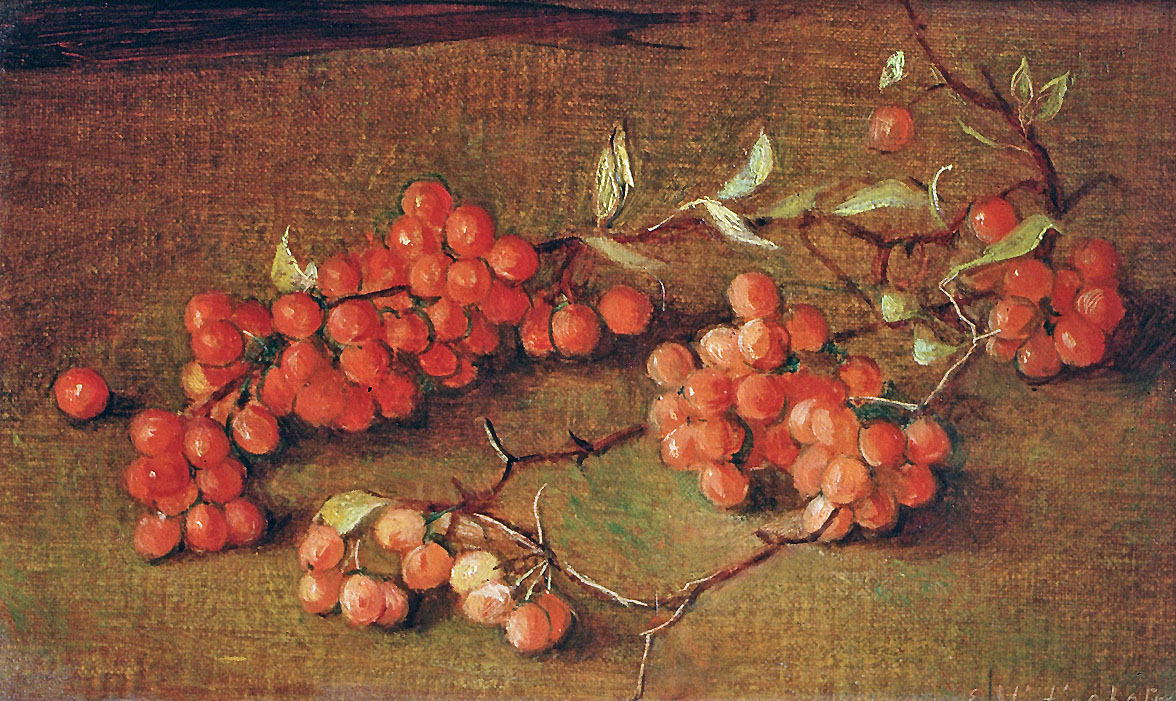
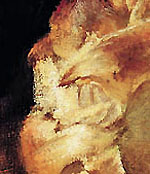 Vietinghoff sets up a stage with the simplest objects of nature and opens them to us with a new view. His paintings stand out with fascinating plasticity and virtuously placed highlights.
Vietinghoff sets up a stage with the simplest objects of nature and opens them to us with a new view. His paintings stand out with fascinating plasticity and virtuously placed highlights.The surface of the subjects is not photographically but characterized in essence. His personal quiet strength and life intensity influenced the pictures.
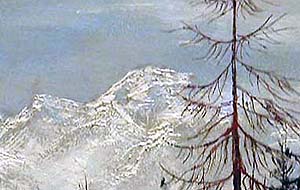
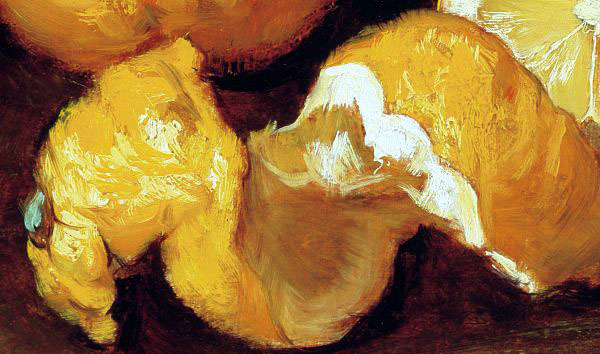 The brighter the colors the more thickly the paint is applied. Thus, the highlights are more intense on a reflective surface.
The brighter the colors the more thickly the paint is applied. Thus, the highlights are more intense on a reflective surface.This effect is specially shown in still lifes and partly in figural subjects where it is increased contrasting to the usually rather dark background.
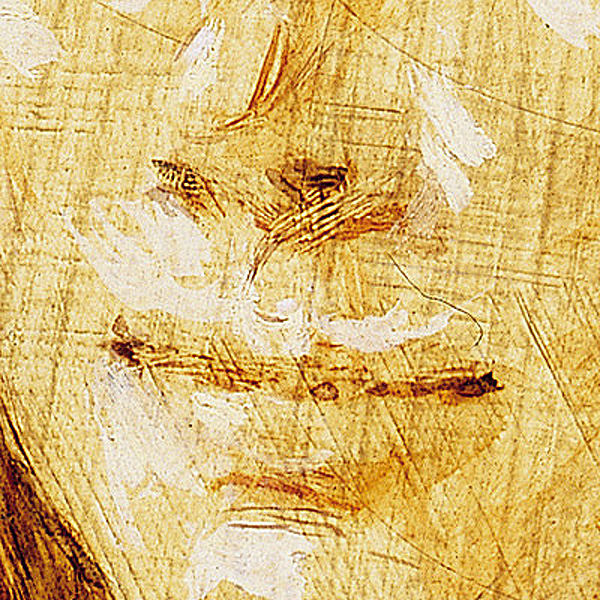
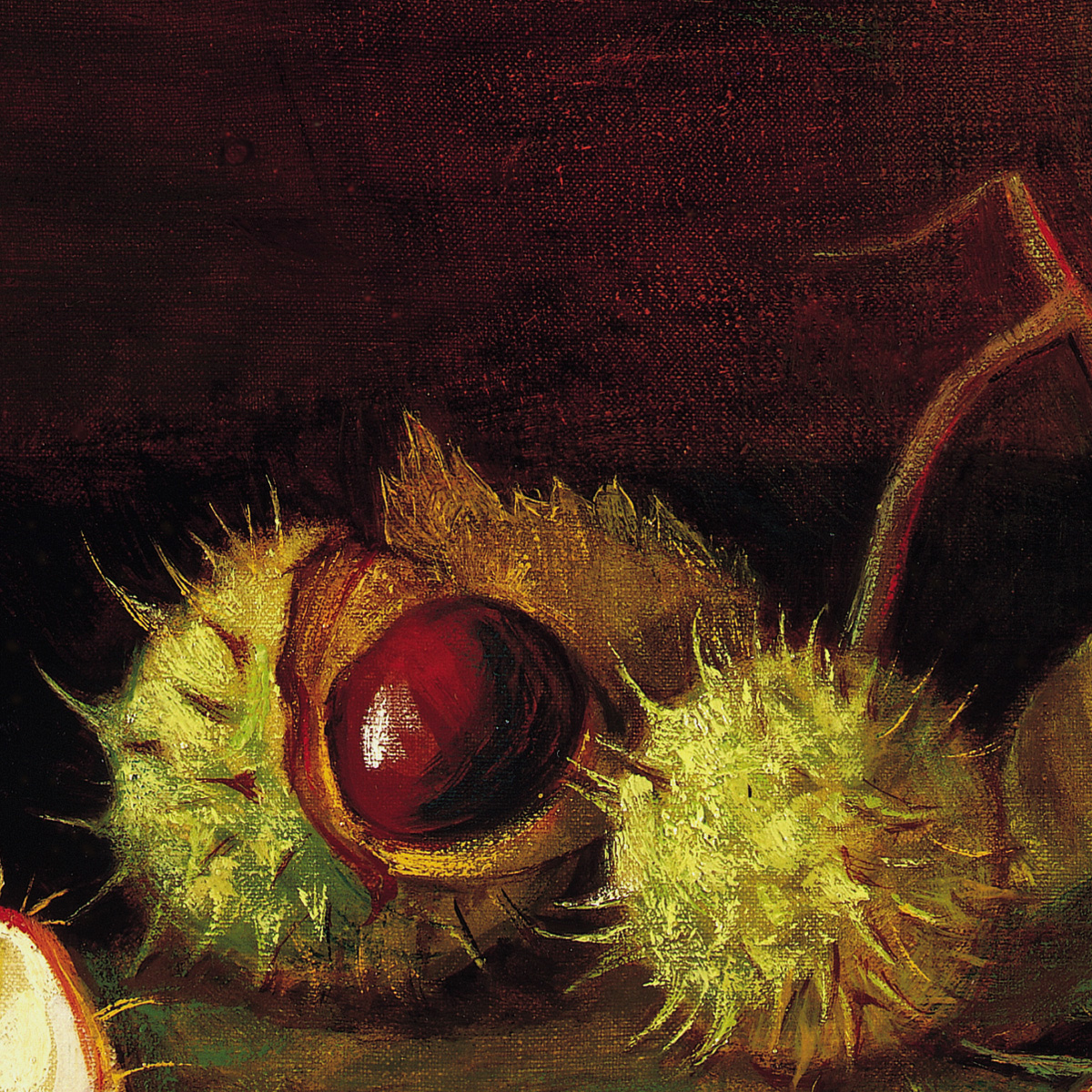 With the thriftiest of means Vietinghoff caused a virtuously high effect. He does not grasp the objects by simply copying but by understanding the essential nature of the form, the colors and the light in a vision, and then converting it with astonishing naturalness.
With the thriftiest of means Vietinghoff caused a virtuously high effect. He does not grasp the objects by simply copying but by understanding the essential nature of the form, the colors and the light in a vision, and then converting it with astonishing naturalness.The exceptional plasticity and inner brightness of his unmistakable paintings is based on his profound knowledge of the properties of colors and on his own color production with the most natural of possible ingredients.